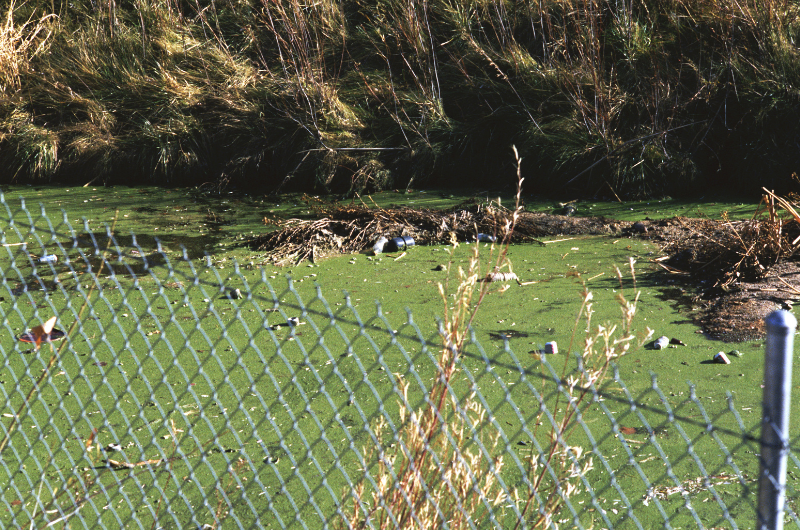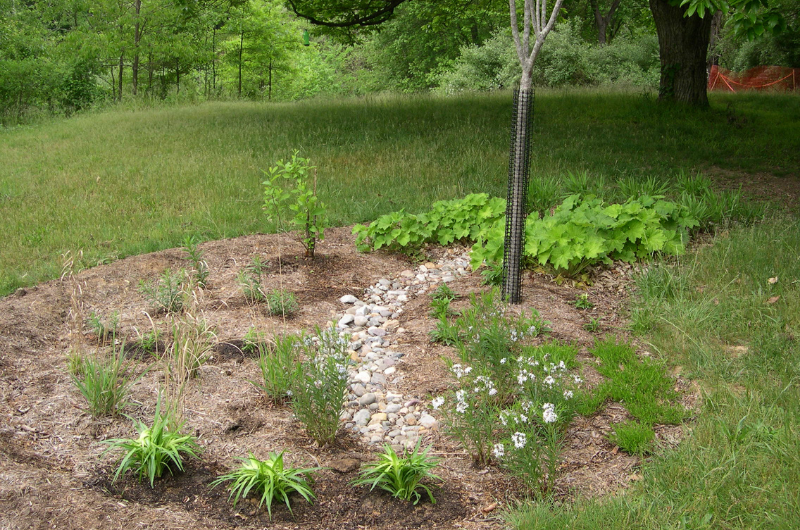Samantha Briggs, IWLA Clean Water Program Director
Outdoor America 2020 Issue 3
When passing around stories at the dinner table, anglers often reminisce about the trout streams they used to fish, thinking back to cooler days when trout were abundant. In this sportsmen arena, it is well known that water temperature has a potentially catastrophic effect on trout – if it is too warm, they simply cannot survive. But did you know that many of the other water quality issues we see today, such as pathogens like E. coli and algal blooms, are also exacerbated by increasing stream temperatures?
Unfortunately, warming streams and other waterbodies are more commonplace today. According to the U.S. Environmental Protection Agency (EPA), since 1960, water temperatures in streams throughout the Chesapeake Bay region have increased an average of 1.2 degrees Fahrenheit. However, this problem is not unique to the densely populated East Coast. A study by the University of Maryland Center for Environmental Science found warming trends in waters across the United States, including in the Hudson, Delaware, Potomac and Colorado rivers. Rising temperatures are impacting streams and rivers from coast to coast.
Why is the Temperature of Waterways Trending Up?
When looking at temperature increases in streams and rivers, there certainly isn’t only one culprit. The following are among the most common causes for increased water temperature.
- Impervious Surface: Think about how much warmer a parking lot is during the summer compared to a wooded area. Poorly planned growth and development transitions acres of forest or grassland into housing, businesses, streets and parking lots. Rainfall that would typically percolate into the ground in the woods or meadow instead runs over heated blacktop, warming as it flows straight into storm drains, which lead directly to our rivers and streams. This results in an influx of warmer water.
- Turbidity: Streams that are clear do not absorb as much heat energy compared to turbid streams (full of mud and other debris) do. If there is not adequate vegetation to hold back soil erosion, streams will capture that sediment, become more turbid, and absorb more sunlight.
- Decreased Vegetation: Vegetation, such as trees, shrubs and grasses along stream banks, not only anchors soil and absorb runoff, but also provides shade – a necessary component of keeping waterways cool. Removing this vegetation allows direct sunlight to hit the streams, warming them (especially during peak summer months).
- Water Diversion: Diverting some water from rivers and streams using dams and reservoirs is commonplace across the U.S., particularly for use in metropolitan areas and crop irrigation. Diverting water from streams and rivers decreases the amount of water flowing in those waterways. As a result, the temperature of those waterways will increase at a much faster pace (especially during summer months). Think about how much warmer the water is in a child’s pool with three inches of water in it compared to 12 inches.
- Climate Change: With more frequent droughts, erratic precipitation and increasing air temperatures, there is no doubt that climate change is contributing to lowering water levels and warming waterways.
In areas where urban and suburban development is commonplace, you will see many obvious changes. These changes to the natural environment include the removal of trees and other vegetation, houses built, sediment runoff into streams, and water diverted for drinking; all while the planet is warming around us. But, truly, how bad is it?
 Algal blooms are exacerbated by rising water temperatures.
Algal blooms are exacerbated by rising water temperatures.
What’s a Few Degrees in the Grand Scheme of Things?
Slight temperature increases in streams and rivers may not appear to be problematic, but they are. Many types of wildlife can only survive in streams and rivers that fall within a specific temperature range primarily because the warmer the water is, the less dissolved oxygen it holds. This is why our fabled trout streams may no longer support the species – above a certain temperature, there is simply not enough dissolved oxygen for the trout to survive.
The same rule applies to the sensitive macroinvertebrates that live in the streams. Stoneflies, mayflies and water pennies, for example, require an abundance of oxygen. With warming temperatures, that oxygen is lost, and so is the diversity of macroinvertebrates and key components of the food chain. Many of these critters also become land-dwelling adults, so warming streams may also impact insect populations out of the water as well.
Persistently warmer temperatures in streams can impact chemical reactions in the stream as well, because warmer temps prevent the water from mixing. From this, we will see more harmful algal blooms, which grow better in warmer temps. They can even choke out aquatic life and may be harmful to humans and their pets who recreate in rivers, lakes and ponds. If these warming temperatures produce the ideal living conditions for cyanobacteria (a toxic form of algae), humans, pets and wildlife may be at risk for liver failure if the water is ingested (which is often why you will see water-based recreational opportunities shut down for periods of time during the summer).
Finally, the problem of temperature goes beyond freshwater habitats. A stream’s water temperature can also influence the mixing patterns in the water it flows into, such as bays and estuaries. Using the Chesapeake Bay as an example, this could put our beloved fishing industry for crabs and rockfish at risk and impact the wildlife that relies on the brackish waters for survival.
 Small rain garden on Izaak Walton League headquarters property.
Small rain garden on Izaak Walton League headquarters property.
This is Definitely a Problem, But What Can We Do?
There are several actions you can take on your property to protect waterways. If you live on a creek, the first action you should take is to keep or plant trees and shrubs along the stream. This streamside buffer will provide shade for the stream, capture and slow runoff, and anchor in soil that would otherwise run off into the stream and cause it to heat up.
On the topic of sediment, don’t sweep or dump dirt into the gutter on the side of the road or storm drains on your street. Instead, sweep dirt and lawn clippings off your driveway and dispose of them properly (compost or yard waste removal service) before they get washed away. Everything we put in the gutter ends up in a creek, which can create a more turbid environment and cause the creek to absorb sunlight.
One of the best things you can do on your property is to prevent water from running directly off your driveway, sidewalk or rooftop and into the gutter or the street. Utilize rain barrels to collect rainfall coming off your roof, and you can use that water on your garden! Also, plant a rain garden, which is a depressed, landscaped area that collects rain and allows that rain to soak into the ground. Typically planted with native grasses and flowers, rain gardens can attract pollinators and reduce runoff in your yard.
Conservation landscaping replaces turf grass with native plants and improves water quality, promotes and preserves native species and provides wildlife habitat. Learn more about how you can get involved with conservation landscaping.
If you notice new developments being built in your region, advocate that the developers use conservation landscaping to capture and retain water. Bring this to the attention of your city or county, and advocate for better land use practices in your community.
Finally, if you are concerned about the health of local streams in your region, monitoring them can help you understand the potential problems, including stream temperature. Beyond sticking a thermometer into the stream every so often (which is simple and provides valuable information), you can also use Save Our Streams to monitor for macroinvertebrates. If your stream no longer supports sensitive species and gets exceedingly warm in the summer, temperature is an issue that needs to be addressed to protect the stream and the wildlife that depend on it.
Find more information on Save Our Streams and how to get involved
See water quality data gathered by volunteers in your community